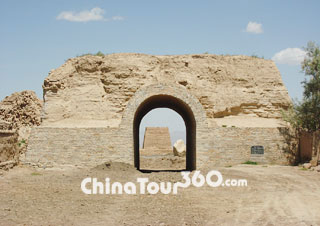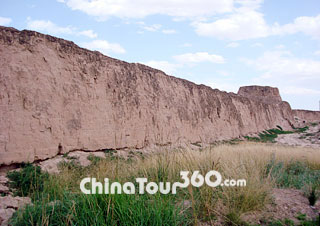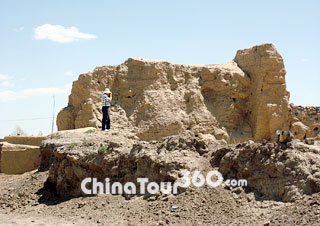 Great Wall in the Han Dynasty, China
Great Wall in the Han Dynasty, China Han Great Wall, China
Han Great Wall, China Yumenguan Pass, Dunhuang
Yumenguan Pass, Dunhuang
![]() Warring States Period, Qin Dynasty, Han Dynasty, and Ming Dynasty geat walls
Warring States Period, Qin Dynasty, Han Dynasty, and Ming Dynasty geat walls
The Han Dynasty (206BC - 220AD) was divided into two periods in China history: the Western(206BC - 24AD) and the Eastern Han (25 - 220). The rulers, by adding to the existing wall of the Qin Dynasty (221 - 207BC), extended the wall to 10,000 km (about 6,210 miles). According to historical record, the Great Wall built in the Han Dynasty was the longest. While among all the projects, the most important section was the wall along the western Hexi corridor by Emperor Wudi of the Western Han Dynasty.
After the death of Emperor Qin Shihuang, Hu Hai, the second emperor of the Qin Dynasty, was even more oppressive than ever. Torrents of peasants uprising finally overthrew its corrupt and autocratic regime. In 202 BC, Liu Bang (the leader of a strong insurgent peasant army) declared himself Emperor of the Han Dynasty and made Chang'an (Xian) its capital. The next year, Liu Bang ordered to remedy the wall built by Emperor Zhao of former Qin state. However, in its north, the Hun nationality was getting stronger and made an attack on Han territory in 200 BC. In order to pacify them, the rulers had to carry out the "connections through marriages" policy during the next 70 years. To further consolidate its domination, Emperor Wudi actively took military actions to the Huns, and ordered to build new walls on a large scale.
On the whole, the project by Emperor Wudi can be divided into four stages. In 130 BC, he sent about ten thousands troops to defend against the Huns in Yanmen and restored the wall of the Qin Dynasty. In 127 BC, General Huo Qubing's troops repulsed the Huns, and a new section of the wall was built to Jiuquan. In 111 BC, the wall was extended to Yumen; while during 110 BC - 104 BC, the wall was built from Yumen to Lop Nur of Xinjiang. It is also known as the Great Wall of the Han dynasty along the western Hexi corridor, which was built to protect the caravans along the Silk Road and further develop the west region. Together with kiosks, beacon towers and frontier fortress, this section also effectively protected the inside areas from invaders.
The Silk Road linked China with the west in ancient times. From Weiwu in the east to Kona Sheher (Kashi) in the west, the ancient road within China was about 5,000 kilometers (about 3,105 miles) in length. With history of more than 2,000 years, sections of the Han Great Wall can still be seen until now in the Gobi desert. The most well-preserved section is in Anxi County of Gansu Province, where the existing Wall is about 150 kilometers (93.15 miles) in length, including 70 beacon towers and 3 city barriers. Especially, Yumenguan Pass and Yangguan Pass are famous destinations for tourists.







